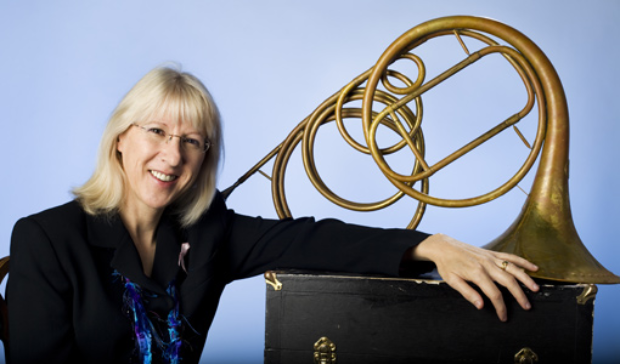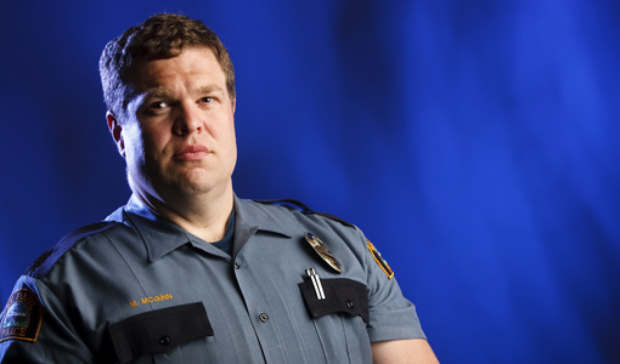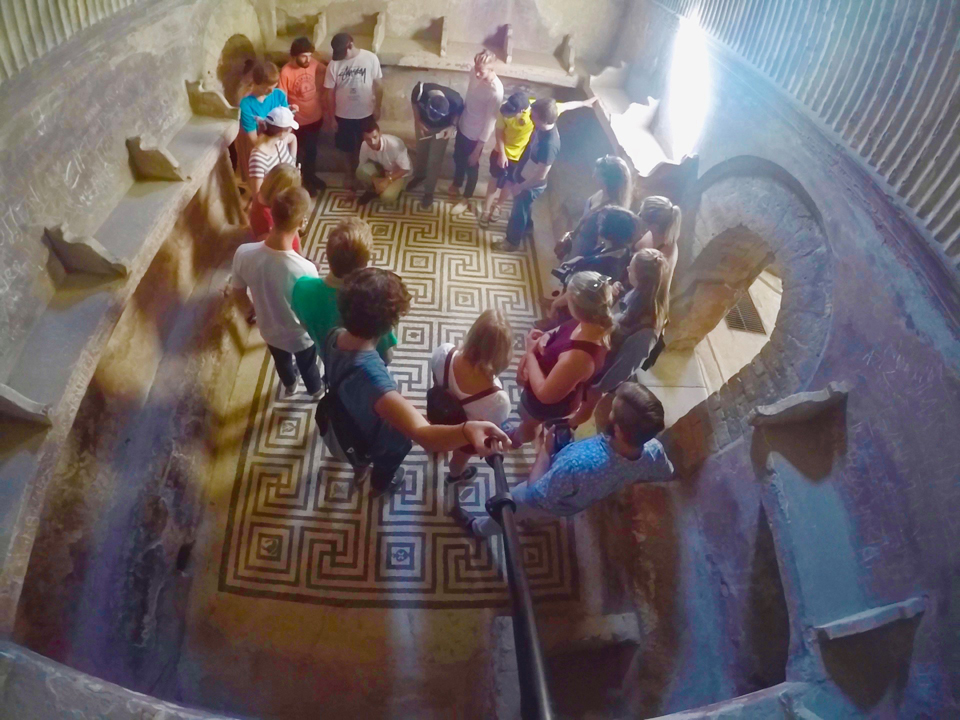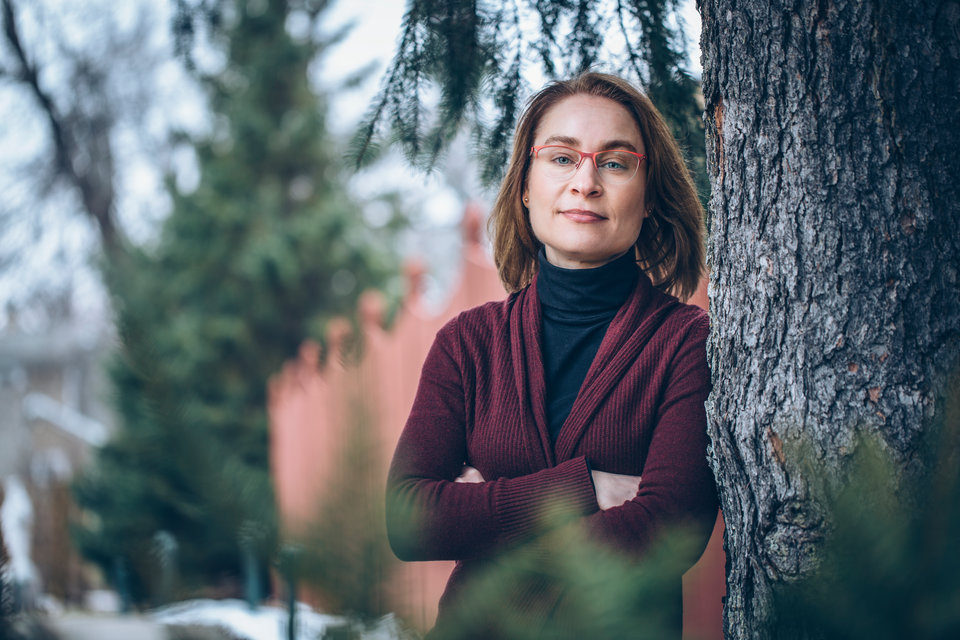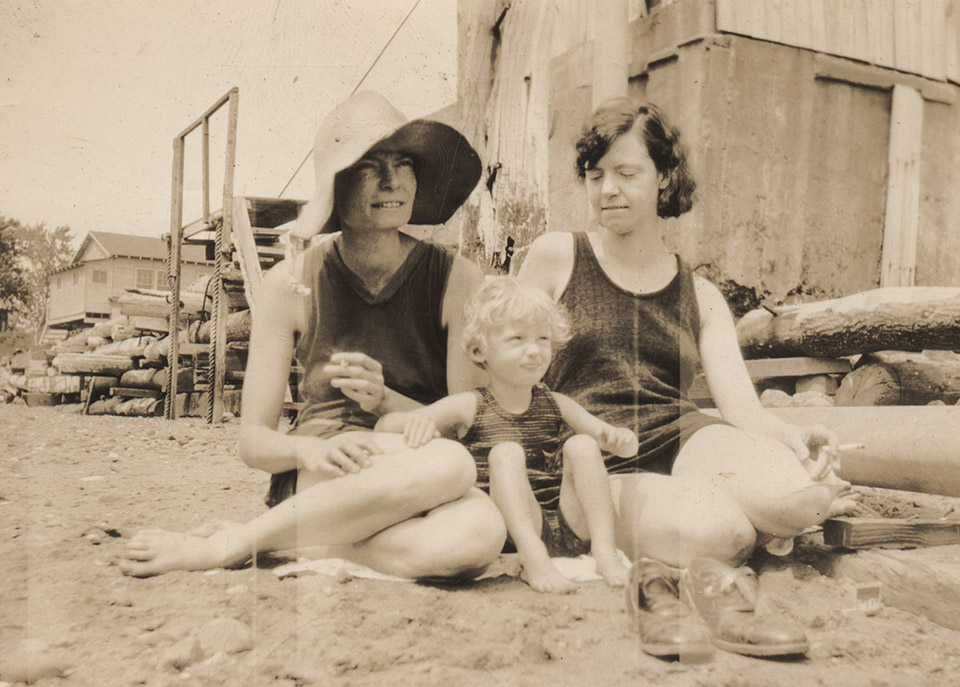“Give us six months and we’ll give you back your life.” I will remember forever these words uttered by my surgeon two days before my first surgery for breast cancer. Ever thankful to be among the cured (six years and counting), I am nevertheless changed forever from the journey. In my quest to regain the life my surgeon had promised, I veered onto a new path of research that connects music and medicine.
Two years ago, I launched the Life and Livelihood Study with Jean Giebenhain, Ph.D., St. Thomas Psychology Department; and two medical colleagues at St. Mary’s Duluth Clinic: Charles Gessert, M.D., M.P.H.; and Lisa Starr, M.S.N., C.N.P. Our research was funded through grants from the University of St. Thomas, the Miller Dwan Foundation, St. Mary’s Duluth Clinic Foundation and the SMDC Research Committee. We have been collecting both quantitative and qualitative data on how breast cancer affects the occupational, medical and overall well-being of women musicians across the country.
The catalyst for our inquiry admittedly was personal: Three years after my successful cancer treatment, increasing chronic pain and weakness on my left side, and a diminishing capacity to pull in a full breath rendered me nearly useless as a musician. During a concert with a chamber orchestra in Duluth (in which I am the principal chair), I nearly passed out from pain and breathlessness after playing an easy solo passage. I have been playing the French horn since seventh grade, and my career as a hornist began long before I became a musicologist. My doctors and I searched in vain for information or research on cancer and occupational health; thus, when my oncologist encouraged, “We’ll learn along with you,” I knew I was on to something.
Musicians: A special category of athletes
Breast cancer affects a significant portion of the population in our country, but fortunately this cancer has a high rate of survivorship. Along with the rising number of survivors is a growing realization that treatments can cause severe and often chronic disabling conditions. Women in athletic professions – sports, of course, but also dance and music or really any career that depends on physical performance – must plan beyond survival if treatments impede their ability to return to work. For musicians, nearly all of the procedures necessary to eradicate breast cancer target parts of the body most crucial to producing music. The intensely physical nature of their work ranks them as athletes, and yet this goes largely unacknowledged by the medical practitioners who treat them. Musicians rarely think about this when they receive the diagnosis, because they just want the cancer gone.
Musicians comprise a special category of athletes. Our athletic development focuses on finely tuning small muscle groups in the torso, arms and hands – all of which can be weakened or injured from surgical incisions, intravenous punctures and chemicals, and irradiated tissue. Like any athlete, it takes years of preparation to build and tone the body as a career professional in music. Our vocational training mirrors that of sports in terms of the long-term investment from childhood onward into private instruction, specialized equipment, travels to competitions, higher education, etc. As one woman described it, “I don’t even know how many years I’ve been a musician. ... That’s what Ido; it’s in my blood. And you know, to suddenly not have that, it’s ... that ... I don’t know who I am without it.”
Injuries are the bane of all athletic-based careers. It isn’t easy to take time off, nor is it a simple matter to launch a new career if injury jeopardizes a livelihood built upon years of training. Not surprisingly, sports medicine served as the foundation of performing arts medicine, which has revolutionized the pedagogy of musical training to include healthy mind and body conditioning. However, the repeated traumas to the body from breast cancer treatments (and the resulting emotional trauma) are far more invasive and potentially debilitating than what any specialization in occupational medicine covers in its current practices.
The Life and Livelihood Study
Toward linking the physicality of music and breast cancer, the first phase of the Life and Livelihood Study is documenting how specific medical treatments affect a woman’s ability to make music. More than 300 women musicians have logged onto the study Web site to report their symptoms by means of an anonymous online survey; those who finished treatment one-to five-years ago with no recurrence are eligible to fill out an extensive questionnaire, all others may contribute whatever comments they wish at the end of the survey. In all, 172 either completed the questionnaire or contributed comments at the end. In the second phase of the study, nearly 50 women who completed the questionnaire volunteered for a telephone interview with us, and we have conducted 38. Here are a few examples of their common, ongoing afflictions:
Lymph node removal under the arm can cause lymphedema, an often irreversible condition that makes the arm swell. Several of our study subjects reported that using a compression sleeve to restrain the swelling became constricting or painful after a couple hours of playing music.
Chemotherapy, surgery or radiation can cause neuropathy: sensations of numbness or pain at surgical sites or in the fingers, arms or toes. If your fingers hurt or feel numb, you can’t work your instrument keys or strings. You also are apt to develop compensatory movements to shield yourself from feeling pain while you perform, which creates an added layer of motor dysfunction (if not also psychic numbing to suppress pain).
Contracture and fibrosis from surgery and/or radiation often progress after treatment is finished. If your breathing is constricted, you can’t play a wind instrument or sing. If your arms don’t extend fully, you can’t pull a bow across your string instrument or reach across your piano, timpani or marimba, or raise your arms to conduct.
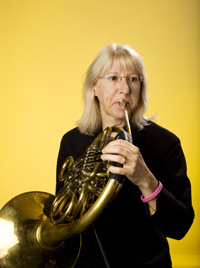 Survey and interview respondents reveal both musicians and doctors are unprepared for long-term problems. Nearly all of the musicians in our study felt extremely confident that their doctors could treat their breast cancer. But afterward, they felt frustrated that their health care system provided only limited rehabilitative services, most commonly lymphedema prevention and massage therapy. One of the violinists in our study had the foresight to bring her instrument to help the surgeon insert a chemo port away from instrument contact points at the collarbone. My surgeon was careful during my lymph node biopsy to avoid cutting nerves in the upper arm that would damage my horn-playing left hand. But we could not have anticipated the cumulative effects of surgery and radiation on my ribs, shoulder and arm.
Survey and interview respondents reveal both musicians and doctors are unprepared for long-term problems. Nearly all of the musicians in our study felt extremely confident that their doctors could treat their breast cancer. But afterward, they felt frustrated that their health care system provided only limited rehabilitative services, most commonly lymphedema prevention and massage therapy. One of the violinists in our study had the foresight to bring her instrument to help the surgeon insert a chemo port away from instrument contact points at the collarbone. My surgeon was careful during my lymph node biopsy to avoid cutting nerves in the upper arm that would damage my horn-playing left hand. But we could not have anticipated the cumulative effects of surgery and radiation on my ribs, shoulder and arm.
The ‘new normal’ after breast cancer
It is impossible to predict who will sustain ongoing symptoms that disable them, or whose coping skills will be sufficient if they encounter problems. The dearth of strategic planning for occupational well-being seems especially glaring in the area of mental health. All survivors struggle to define the “new normal” after breast cancer, and there are social work and psychotherapy resources to help patients address a life-threatening illness. Nevertheless, surviving (or feeling gratitude for having survived) is not a panacea for chronic conditions that undermine the quality of life. Returning to work or life as it was before cancer is not always a straightforward process of simply taking up where you left off.
Survey and interview participants have expressed appreciation for the chance to disclose their struggles to us. Interviewees often register surprise, then relief, to learn that others have occupational problems similar to theirs. Although I am pleased that our project provides a forum for these women, I also am troubled that so many feel that they are on their own in confronting the challenges of survivorship. I suspect that this experience is not unique tomusicians.
Despite the challenges musicians have described to us, very few have abandoned music. Their resilience and creativity in finding their way back are critical components of our research goal to describe and understand the experience of a specific survivor population. In fact, results from the interviews have taken us way beyond our original hope to identify a few salient themes of survivorship.
Conventional uses of music therapy – for example, playing recorded music to facilitate calm feelings during medical treatments – do not seem effective for this patient group. Musicians generally have a hard time shutting off their ingrained tendency to analyze and classify whatever they are hearing. Listening to music can be deeply distressing for a musician who is out of commission, because they are reminded of what they cannot do (or might not ever do again). Musicians must choose carefully how they engage with music during treatment and afterward. Performing and listening may elicit pain (physical and otherwise), but avoiding music altogether may not provide relief either.
Motivated to take greater musical risks
The musicians who participated in our study have described eloquently this conundrum. Some were determined to continue performing, claiming it helped them confront both the physical and existential changes wrought by breast cancer. Others felt compelled to challenge their workaholic attitude and resolved to lighten up on their perfectionism and develop healthier work and lifestyle habits. Several reported a budding interest to learn new repertoire that, previous to having breast cancer, seemed too challenging or elusive. Their capacities for taking greater risks was heightened as they explored new works or a new facet of their musical voices. Those profoundly incapacitated are grieving the loss of their musical selves, and often are angry and fearful, sometimes reaching gingerly toward hope to engage with music again someday.
Many musician survivors shared with us that, upon deep reflection, they became aware of a sense of legacy they felt to their audience, children or students. One study participant recorded an album of cello duets with her daughters who also are musicians. She realized that she had no recordings of music from her own mother, who had died from breast cancer. A vocalist-guitarist embraced her physical changes as marking a new era of her artistic persona: She recorded an album of original songs with an accompanying booklet of her watercolors and writings, chronicling her breast cancer experience as a healing spiritual journey.
Some musician survivors give voice to their breast cancer experiences through service to their communities. The daughter of two Holocaust survivors emerged from breast cancer so transformed that she founded a community choir of fellow survivors and their loved ones. This ensemble is celebrating its fifth year of providing an annual concert series in a major metropolitan area. Another survivor, a rock guitarist, puts on a “Cancer Stinks Road Show.” Many bring a new entrepreneurial spirit to their freelance work, as with the oboist who lobbied orchestral musicians from three eastern coastal states to volunteer for a concert benefiting local hospitals and research. Invoking the shared gallows-humor among cancer patients, a retired music professor and pianist recorded an album of “Chemo-Karaoke” sing-along songs. Her new role in rousting chemotherapy patients to sing with her “Glory, glory, radiation!” brings laughter to an otherwise gloomy treatment room.
A rehabilitation plan for musicians
As we begin to process the ocean of data collected over two years, I can share a solid take-away message so far: The quality of life for people who lead active physical lives is a vital factor in treating them for breast cancer. For musician patients, health care practitioners must help them approach their use of an altered physical body in new ways, so that they can function in a manner healthy and appropriate to their occupations. At the Piper Breast Center in Minneapolis, patients can receive a pre-surgical assessment of how they move so their doctors can design a rehabilitation plan for them. Therapists and physiatrists at the Sister Kenney Institute routinely treat musician survivors from Piper and elsewhere. They note that musician patients know what they need to do to perform, but often are at a loss as to how to restore their peak physical condition after breast cancer. Appropriate mental-health counseling also can help patients navigate effectively through post-treatment challenges, including career rehabilitation.
My own diligence to thrive as a musician cured of breast cancer led me to various practitioners, not only those at Sister Kenny but also to a hospice doctor in Duluth who concocted a topical cream to deaden neuropathic pain. In addition, Rolf and other massage therapists have untangled, slowly and carefully, the mass of hardened muscle fibers, scars and myofascial tissue around my rib cage. I am working with a teacher of Alexander Technique to restore my balance and poise so that I may move and play the horn with ease again. I never really stopped performing; it was just so painful to play. I was determined not to let my chronic symptoms prevent me from continuing to perform with two chamber orchestras in Duluth, but constant pain made me reluctant to cultivate new performing opportunities here in the Twin Cities.
Although the occupational needs of musician survivors launched our research project, my colleagues and I designed our study to generate hypotheses for additional inquiry, including topics beyond the exclusive concerns of performers. Within these musicians’ stories are themes relevant to a much wider constituency of patients and their doctors. From the insightful perspectives into the healing role of music, for example, we can affirm the creative spirit that can be nurtured within all patients. We hope that our findings will engage the medical community in new research initiatives that will improve the quality of life for all cancer patients and survivors, regardless of their level of activity.
In facing cancer and other life-altering circumstances, people need support to preserve their physical, emotional, mental, creative and spiritual health. Musicians who thrive beyond their own times of crises can, in turn, “make a joyful noise” as they share their experiences, strengths and hopes with others. Such returns are possible to cultivate in all walks of life and livelihoods.
Read more from CAS Spotlight
